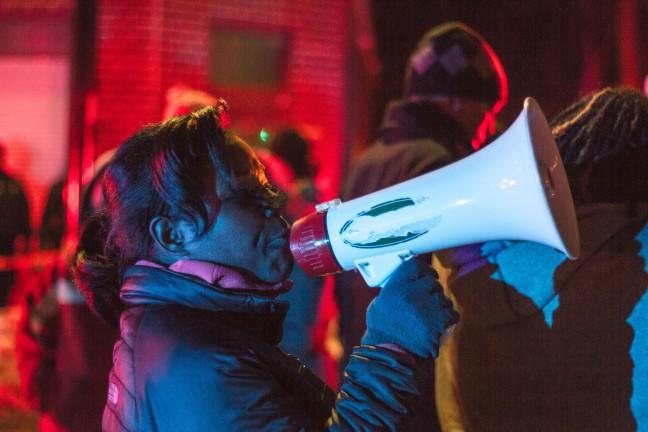After the shooting of unarmed black teenager Tony Robinson, Madison was left reeling. It’s another death in the national trend of officer-involved shootings affecting young black men disproportionately. However, this time it took place here in Dane County, considered by many to be above such issues of racial conflict and prejudice.
Tony Robinson’s death: a portrait of a life ended, a life halted, a community united
Robinson’s death has lifted the veil covering Madison’s sinister side. It has also unleashed competing views on how the community should respond to this reality. Unless people are willing to compromise and forge an alliance moving forward, their division may hurt the cause for racial equality here in Madison.
Taking a more radical view in solving racial disparity in Madison, The Young, Gifted and Black Coalition has been one of the leading groups protesting and organizing in the days after Robinson was shot. They argue mass incarceration, including the disproportionate imprisonment of black people, is a major issue of state-sponsored violence. In the past, they have called for a release of 350 prisoners of color from the Dane County Jail. They also are strong proponents of less policing and self-determination in the black community.
County committees pass controversial proposal for Dane County jail
Madison Police Chief Mike Koval represents a less extreme view on racial relations. Many activists may cringe at the suggestion that Koval is an advocate for racial equality. Yet the evidence strongly suggests he agrees a problem exists, and wants to work to fix it.
His response to Tony’s death included a personal apology to his family, transparency about the details of the shooting and complete support of protestors’ right to demonstrate. He even said that protests were “entirely appropriate,” quite a change from the militarization seen in Ferguson.
In response to demands of YGB, Koval suggested six different solutions to decrease racial disparity locally, including changing drug policy to focus on treatment rather than punishment and increasing support for at-risk youth before they commit crimes rather than after. These are good ideas, but they require legislation from the city or county and he cannot act alone.
The two mentalities reflect differing views of the public-police relationship. This difference was best explained by YGB in an open letter they sent to Koval in January. They wrote, “The relationship that we desire to have with the police is simple: no interaction. Our ultimate goal is to be able to hold our own communities accountable and to expel what we consider an occupying force in our neighborhoods.”
Koval responded with a mix of indignation and exasperation, “I applaud and encourage our officers to get out of their squad cars, build relationships and show our citizens that the cops are not merely reacting to calls for service. We are here to act as guardians to our community. That means being preemptive, pro-active and collaborative.” Both groups are sick of mistreatment and respective stereotyping, and fail to see the potential ally sitting across from them.
While YGB seems to have shifted their attention to the city and county governments, which could also make some of the changes Koval suggested, they maintain their stance on policing. These demands remain extremely unlikely to succeed, and deal with the issue of racial disparity as a symptom rather than fully facing the deeper issues of poverty and socioeconomic disadvantage, which are major roots of prejudice in criminal justice.
Racial disparity in Dane County should be a priority; Yet since the Race to Equity report was released, there has been little legislation passed to solve the problem. We need to demand changes on our own in whatever way we can, including protests and disruptions. However, if YGB and Koval can reconcile their viewpoints and work together on legislation to fight poverty in Dane County, the battle against racial disparity will get a whole lot easier a whole lot faster.
Alex Derr ([email protected]) is a junior majoring in environmental science and political science.








